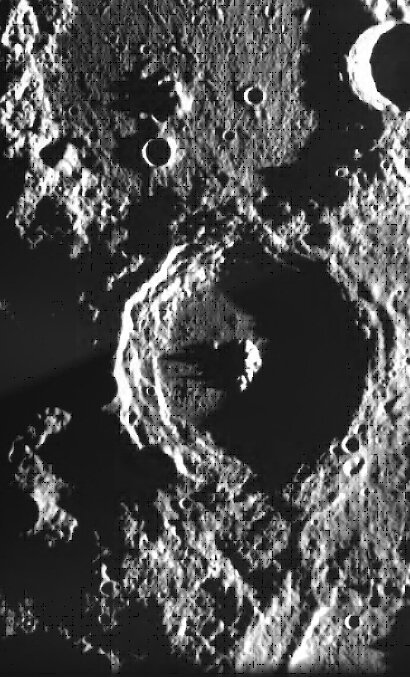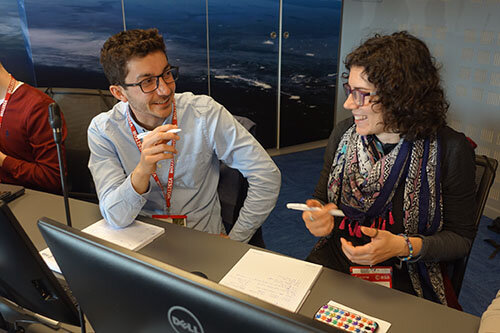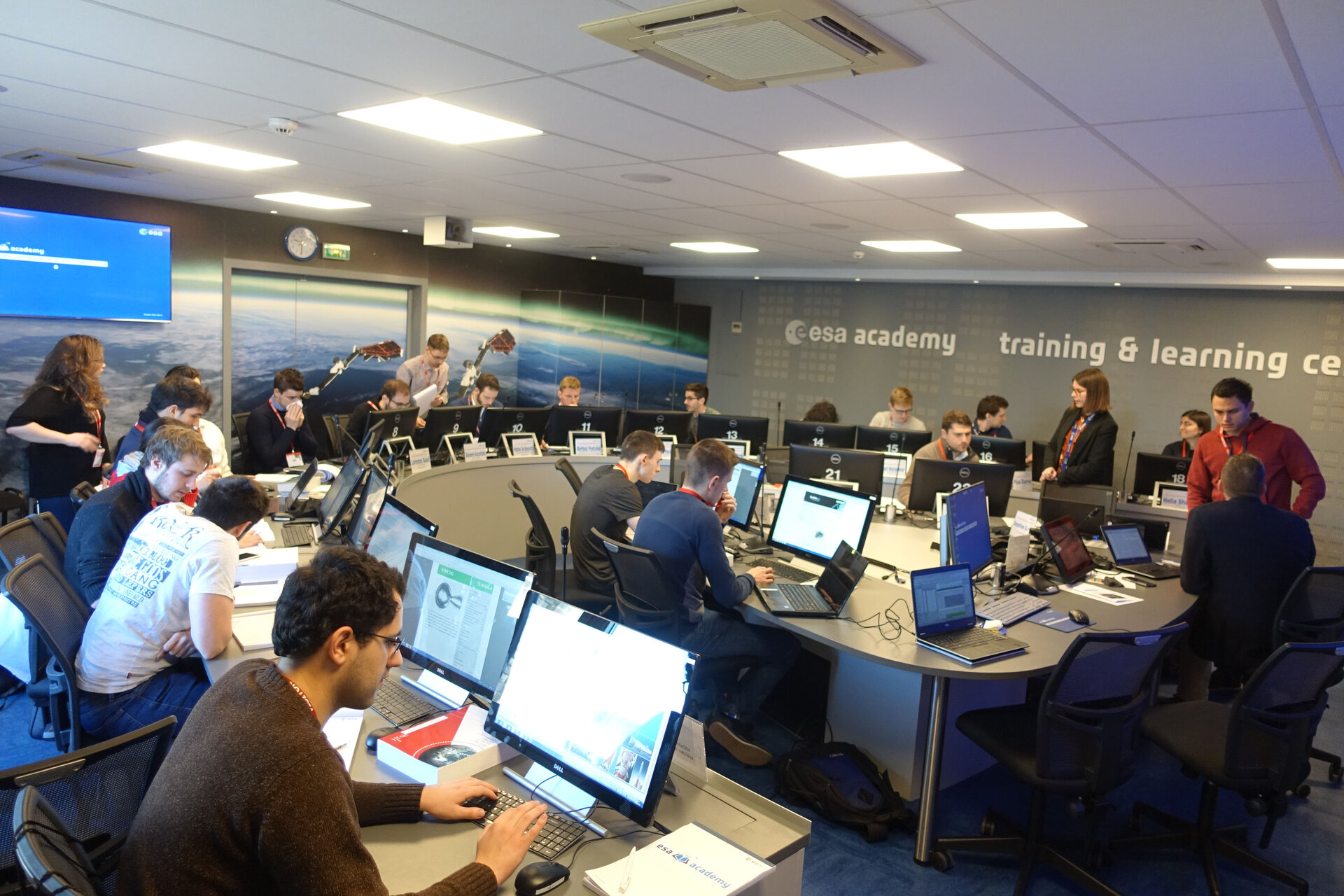Students use Concurrent Engineering to design a Moon mission with impact!
As Earth’s natural satellite, the Moon is a well-studied celestial object. However, many secrets remain, and unmanned probes are an excellent way of continuing our investigations. This was the theme of ESA Academy’s latest Concurrent Engineering Workshop, held from 20 – 23 February 2018.
Hosted at ESA Academy’s Training and Learning Centre, ESA-ESEC, Belgium, and attended by 22 university students from 12 different ESA Member and Associate States, this Workshop sought to give participants an intensive introduction to the Concurrent Engineering design method. On-hand to assist were two System Engineers from ESA’s Systems and Concurrent Engineering section at ESTEC.
The Workshop began with an introduction to Concurrent Engineering and the Academy’s Concurrent Design Facility (CDF). Then there were exercises for students to familiarise themselves with the Open Concurrent Design Tool (OCDT), which is the actual tool used by ESA in professional CDF studies. Once the participants had demonstrated an understanding of the core concepts, their mission was revealed: use Concurrent Engineering to design a mission to the Moon! . The mission involves a stack of two micro satellites that shall reach the Moon and separate before arrival.

The LUNar CrasH mission – or LUNCH for short – had an ambitious goal: observe the crater, scan for water particles and ejecta plume generated by crashing an impactor into the surface of the MoonTo achieve this, the students needed to design an impactor and an observer. As an additional challenge, the observer would then be tasked with crash-landing on the surface, but also with continuing its observation after impacting with the Moon itself. A difficult task indeed!
A British student from the University of Surrey explained, “The Workshop was an amazing opportunity to gain experience in a realistic, multi-disciplinary and multi-lingual environment. It's amazing how much you can achieve with the right support and direction!”

The students were divided into teams to cover the different subsystems:
- Configuration
- Structure & Mechanisms
- Propulsion
- Mission Analysis
- Attitude and Orbit Control Subsystem (AOCS)
- Power
- Thermal
- Optics & Sensors
- Communication & Data Handling
On the Workshop’s second day the students started their task in earnest. Each team began designing their subsystems, defining their concept of operation and making simulations. Their first iteration was a good attempt, but the design required further refinement in order to meet the mission. Undeterred, the students spent their remaining days refining and improving, until they finally froze their design.
“In my opinion the best part was looking at our project growing up as the time was passing, and realising at the end what an amazing job a group of people can achieve working truly together,” said an Italian student from the University of Bologna.

Then came the test: presenting their subsystem designs to the ESA experts. Despite the many challenges, the students did a sterling job and produced the design for a feasible mission! The students were happy with the result, and the experts were suitably impressed.
When not busily working on LUNCH, the students has a chance to play the EcoDesign game, which is based on the environmental impacts of a space mission. They also visited ESEC and the PROBA Operations Room.
A Canadian student from the University of Bremen summed up the experience: “The Concurrent Engineering workshop taught me that the key to achieving a design for a successful mission was 20% about having an expertise in the field and 80% about teamwork. Only a solution that works for all subsystems will ultimately work as a whole. I loved the diversity of the participants and the openness of our experts. We shared a wide range of technical backgrounds and tried to build on our strengths to reach the mission's objectives. I look forward to participating in future ESA Academy workshops and will definitely encourage my peers to do the same. It has been truly an educational and rewarding experience.”
- For more information about ESA Academy events, please click here.
- Contact e-mail: esa.academy @ esa.int


